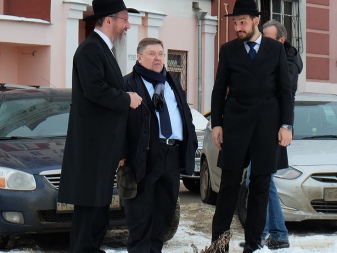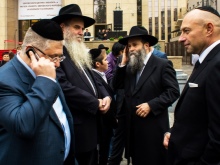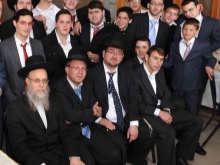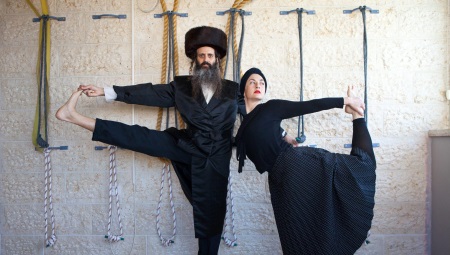Historical facts
The history of the development of the national costume of the Jews is diverse, interesting and even sad. When creating the traditional outfit, representatives of the Jewish nation had to take into account that the inhabitants of most countries were extremely negative towards them. Therefore, they tried to give the clothes a look so that it looked natural in any locality, but at the same time did not depersonalize the person.
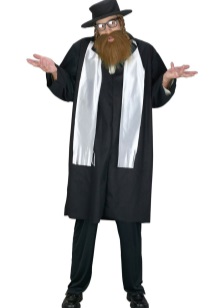
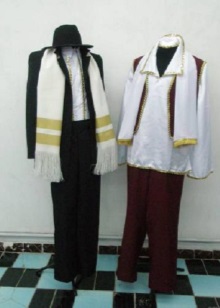
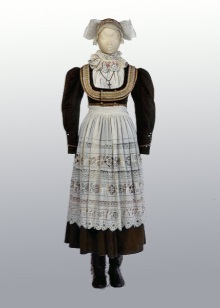
The Jews managed to achieve this effect. A traditional Jewish costume combines two necessary qualities: it helps to emphasize the color, the specificity of the people, without causing misunderstanding among people of another nationality.

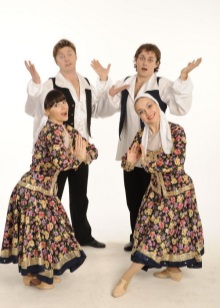
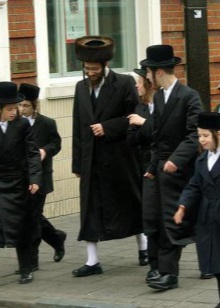
For a period of comparatively short duration within the framework of world history, the Jews managed to achieve excellence in their national attire. Much has been taken into account to make the costume attractive and comfortable.
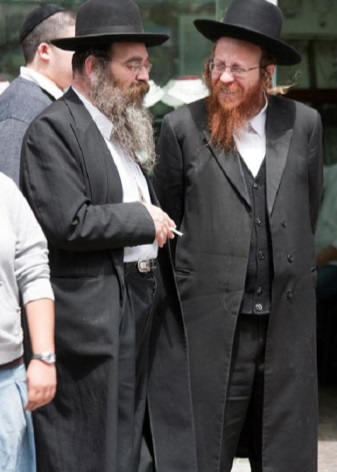
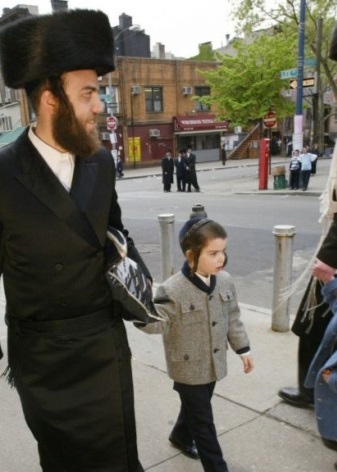
Today, Jewish traditional clothing is practically unchanged, however, talented designers often modify outfits, experimenting with colors, decor and style.
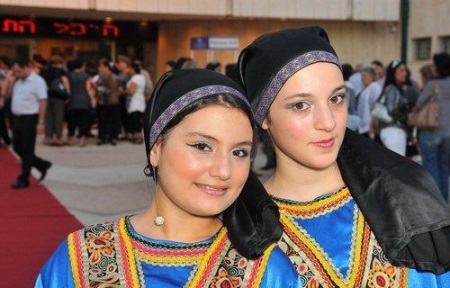
On the road to ideal
Jewish national costume had to step on the steps of progressiveness in order to become exactly the way people see it in the twenty-first century.
- The very first version of Jewish attire was born thanks to the culture of the great Babylon. Having cast off the shackles of Babylonian slavery, the Jews clothed a caftan. Two shirts were considered standard - from linen and wool. The costume was complemented by a wide belt.
- The reign of King Solomon had a positive effect on the national costume of the Jews.To create the outfit began to use weightless fabrics that seemed airy. Embroidery with gold and silver threads became widespread. Particularly wealthy families could even afford the decor of precious stones. The hairstyle of rich girls was decorated with pearls.
- As the twentieth century approached, Jewish clothing was losing its chic. Laconicism and modesty began to prevail in the style. The emphasis was on the details that determined belonging to any community and religion. In order to merge with European society, Jews had to exploit the coat and black hats popular at that time.

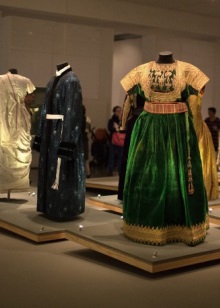

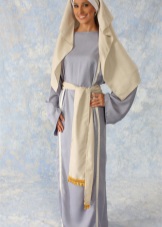
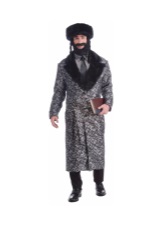
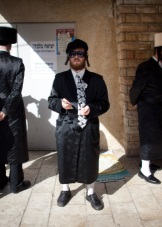
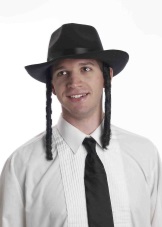
Features of the color scheme
The national costume of the Jews does not differ in brightness and richness of shades. The outfit is restrained, to some extent even strict. In the twentieth century, settling in the small towns of Europe, Jews were afraid to attract attention, so we had to forget about colorful flowers.
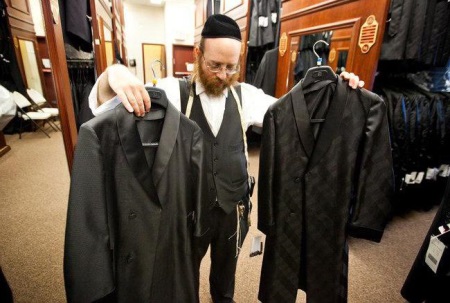
Briefly describe the main color of Jewish clothing - neutrality. Black is especially common. In the cold season, Jews dressed in outfits decorated in brown or blue. And during the summer months, to save themselves from the heat, they wore white clothes.
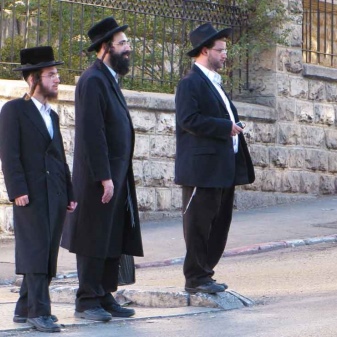
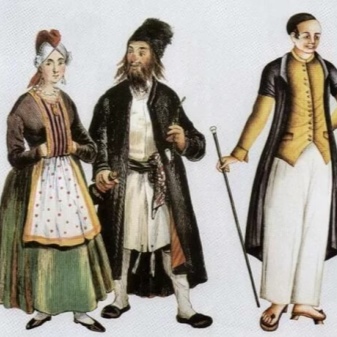
Material and style
Jewish culture has always been focused only on life in the city, so there is no model for peasants. Unlike representatives of other cultures, girls never had to deal with the manufacture of material for clothes with their own hands - all fabrics were purchased in the markets.

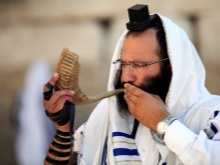
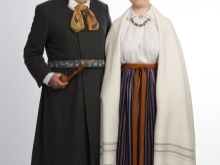
The cut of the national costume of the Jews is free and voluminous, however, does not completely hide the silhouette, which is a plus - which woman will like to conceal her dignity from other people?
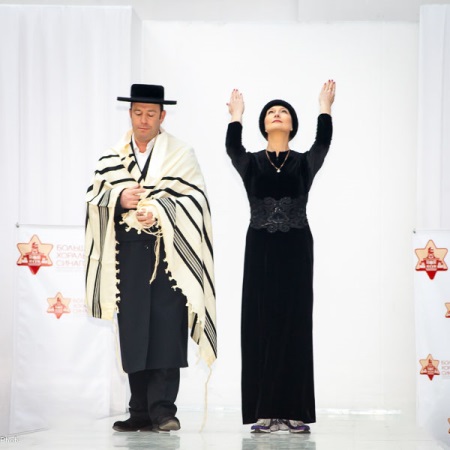
Men's outfit
Jewish men did not seek to be in the center of female attention through elaborate clothes. They went the other way. The male national costume of Jews evokes sympathy with its specific elegance, masterfully emphasizes masculinity, religiosity. The robe is a cloak and a frock coat in black.
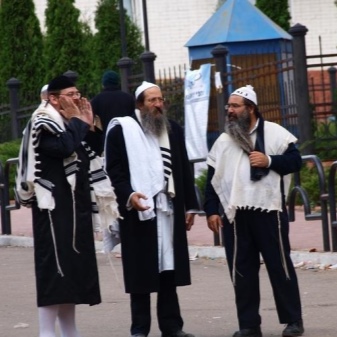
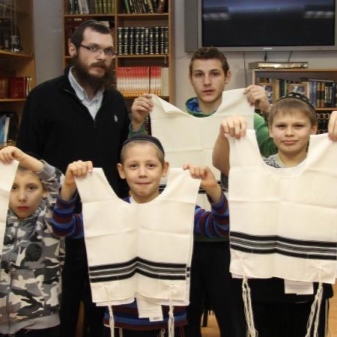
The cape has an official name - Talit Katan. Without this element it is impossible to imagine national men's clothing! The cloak looks like a white rectangle of fabric with a wide slot for the head. On the edges are special brushes. Each one has eight threads.

Talit katan is pleasant to consider only outerwear, but this is a misconception. Men wear a cape and under a shirt. It is important that the only condition is met - the tassels should be on top of the trousers.
Suit for women
Women's costumes could not boast of something beyond, but the dresses still did not hide the natural attractiveness of Jewish girls. Yes, they did not wear chic clothes like the Europeans, however, there was always something special in the national outfits of the Jews. What made them extraordinary.
Women's traditional attire included a skirt, blouse, dress and apron. All clothes had to fulfill a practical function: dark colors (black, gray, brown) perfectly protected from household pollution, which invariably persecuted women doing housework. It was also believed that the apron protects from curses and the evil eye.
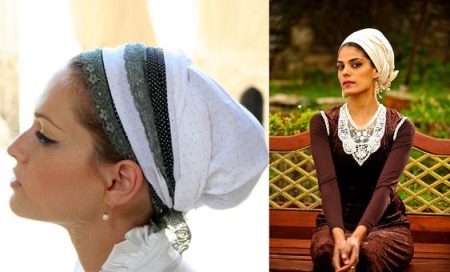
Girls who hold outdated views on religion opted for dresses with long sleeves that hide their hands to the very wrists. Such women's costumes were decorated with lace and white embroidery, which symbolized purity and kindness. The dress was distinguished by a high collar, also complemented by lace. A tight ring of leather belt was concentrated at the waist.
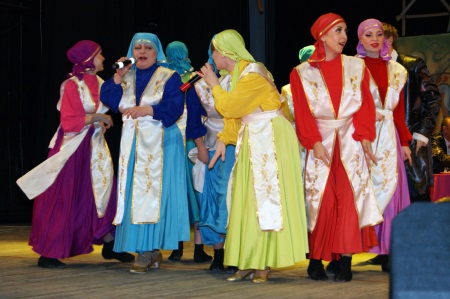
Children's options
The children's national costume of the Jews had little differences from the adult version. The girls wore such closed, devoid of brightness dresses, but they were not as long as their mothers.

The boys did not have the right to wear a cloak called "citit" - religious canons forbade this.Having reached the age of thirteen, the young men could celebrate the barmitzva, and only after that the quote became available to them. After the celebration, the boy could also proudly call himself a man.
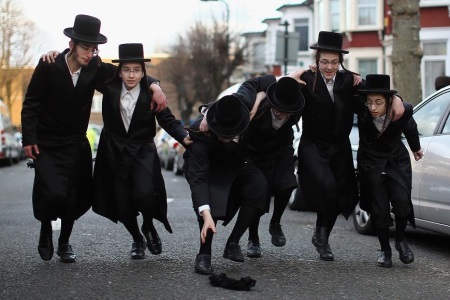
Jewelry and shoes
Jewish national costume does not contain a large number of permissible accessories. Men put on belts and ties, but in rare cases. Ties cause a lot of controversy among Jews. By tying it, you get a knot in the shape of a cross. This is what discourages adherents of the orthodox religion.
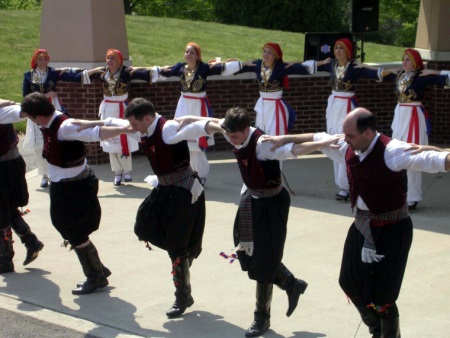
Women loved hats very much. Beautiful beads that were put on in two rows were in great demand.
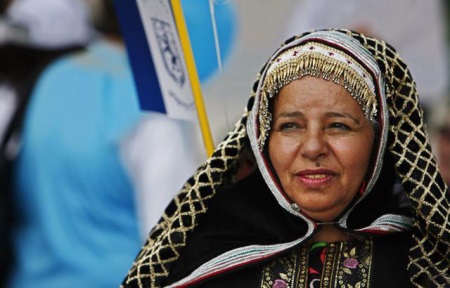
Shoes in a Jewish costume are tall, rather comfortable shoes that are securely fixed on the foot with durable lacing. In warm time, they did not wear socks, and with the onset of cold weather, knitted shoelaces had to be used.
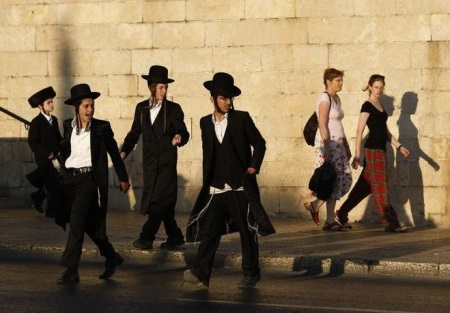
Hats
No self-respecting Jew can do without a headdress. In some cases, men use several products. Most often it is a yarmulka, covered with a dashka or a casket.
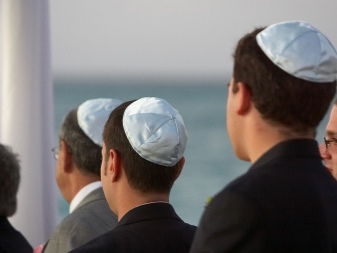
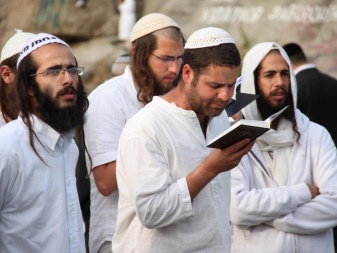
Yermolk is of great importance. The size and cut of this traditional headgear carries a hidden meaning. The yermolk looks like a round hat, and many people, having seen it, immediately think about the Jewish nation.
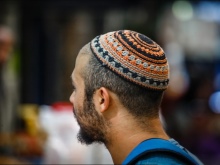
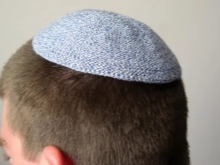
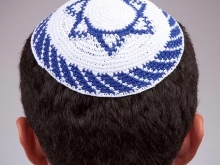
If you literally translate the name, you get two words - "yeer" and "malka". The translation is simple - “fearing the lord,” that is, God. Religion plays a big role in the life of Jews.
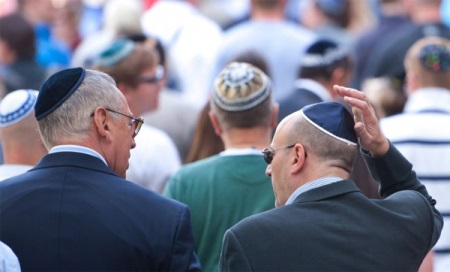
The design of the yermolok can be different. Perhaps this is the only striking attribute in the national costume of the Jews. Hats are sewn of wool and felt, there are also knitted patterns. But men can’t acquire a yarmulk at will, preferring any style or color. The choice should be based on what option the Jews from the community wear.
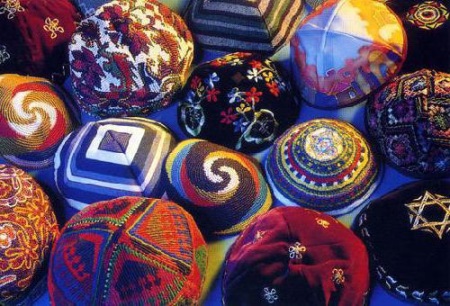
Black hats also give clues regarding religious affiliation. The size and decorative inserts show which branch of Judaism the headdress owner is leaning towards.
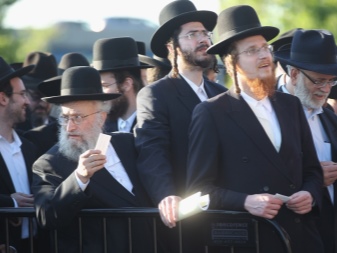
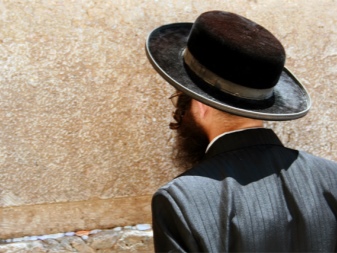
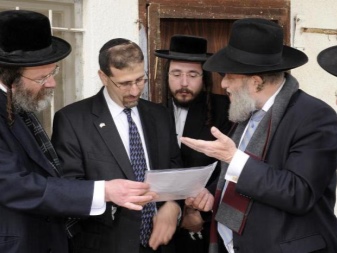

Traditional costume in modern society
Jewish attire in modern times has not been used less often. Until now, models of national costume adorn the streets of different cities. Deeply religious people did not refuse from wraps with yermolks. The products were simplified a little, but at various ceremonial events, Jews appear in the original version of traditional attire.
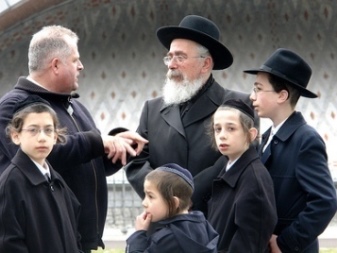
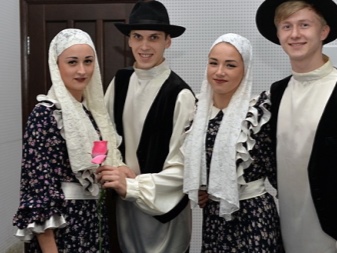
The national costume is necessary for dancing, because themed festivals are often held! Girls prefer to speak to the audience in a modern variation of the Jewish attire, as it is much more convenient to make active movements in it.
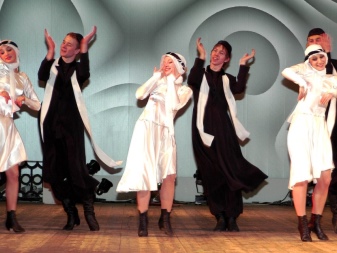
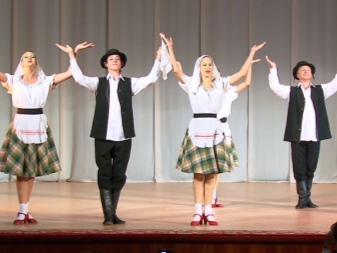
Reviews
Buyers of Jewish costumes are satisfied with the purchase. They assure that the outfit is able to give extraordinary sensations. The owner of national clothes will be able to plunge into history, enjoy this strange, but pleasant feeling.
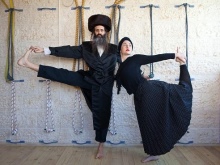
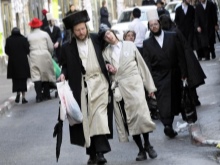

The suit looks attractive and original.

